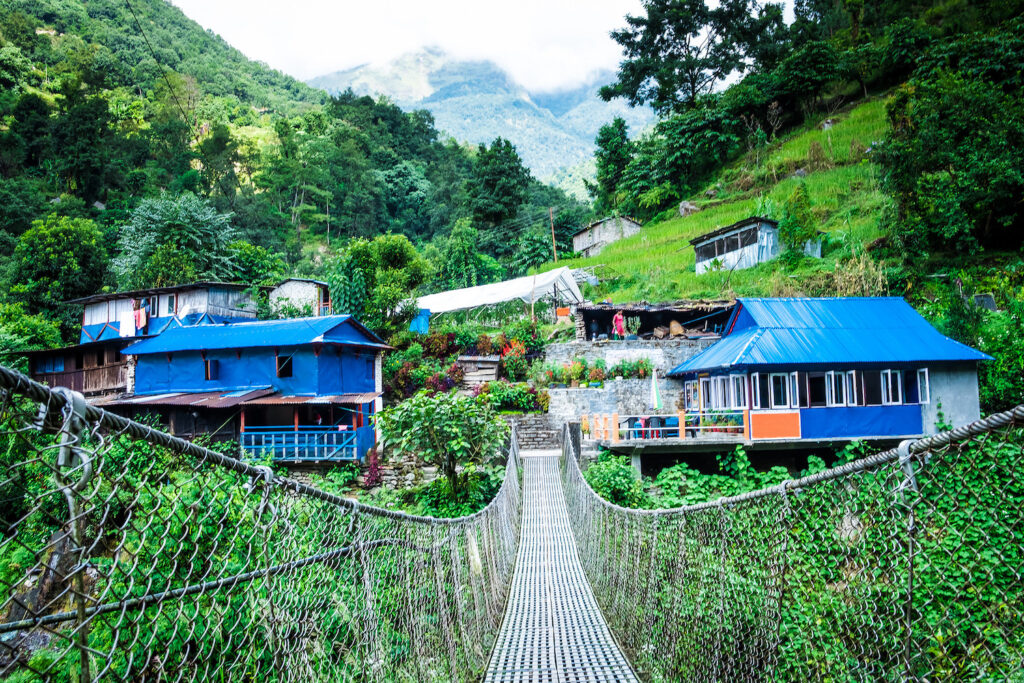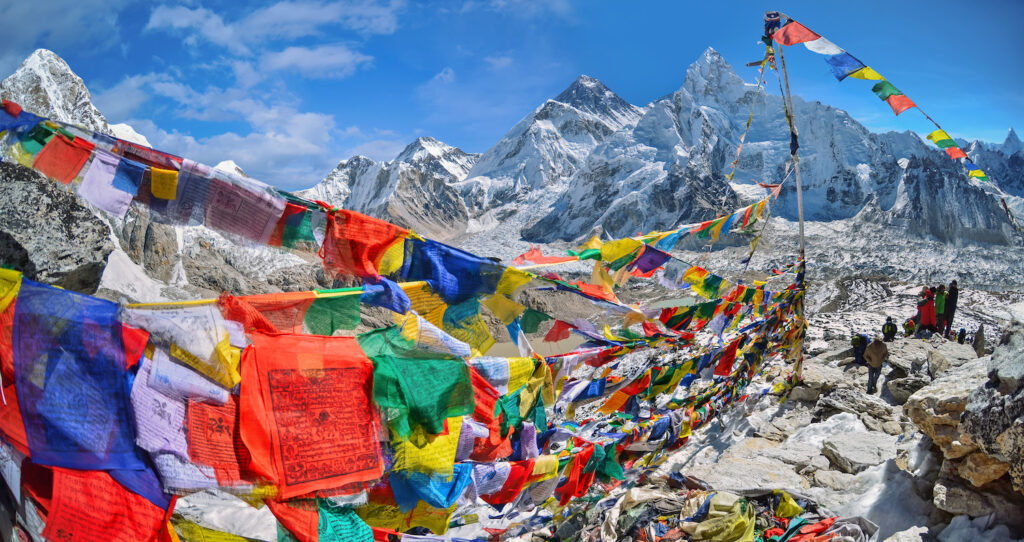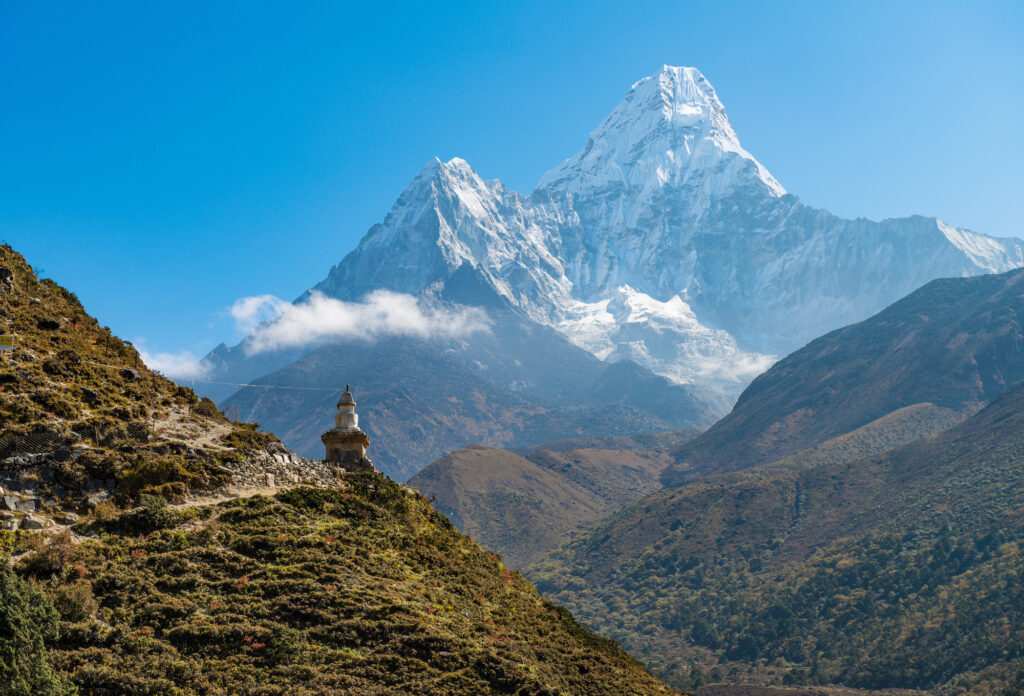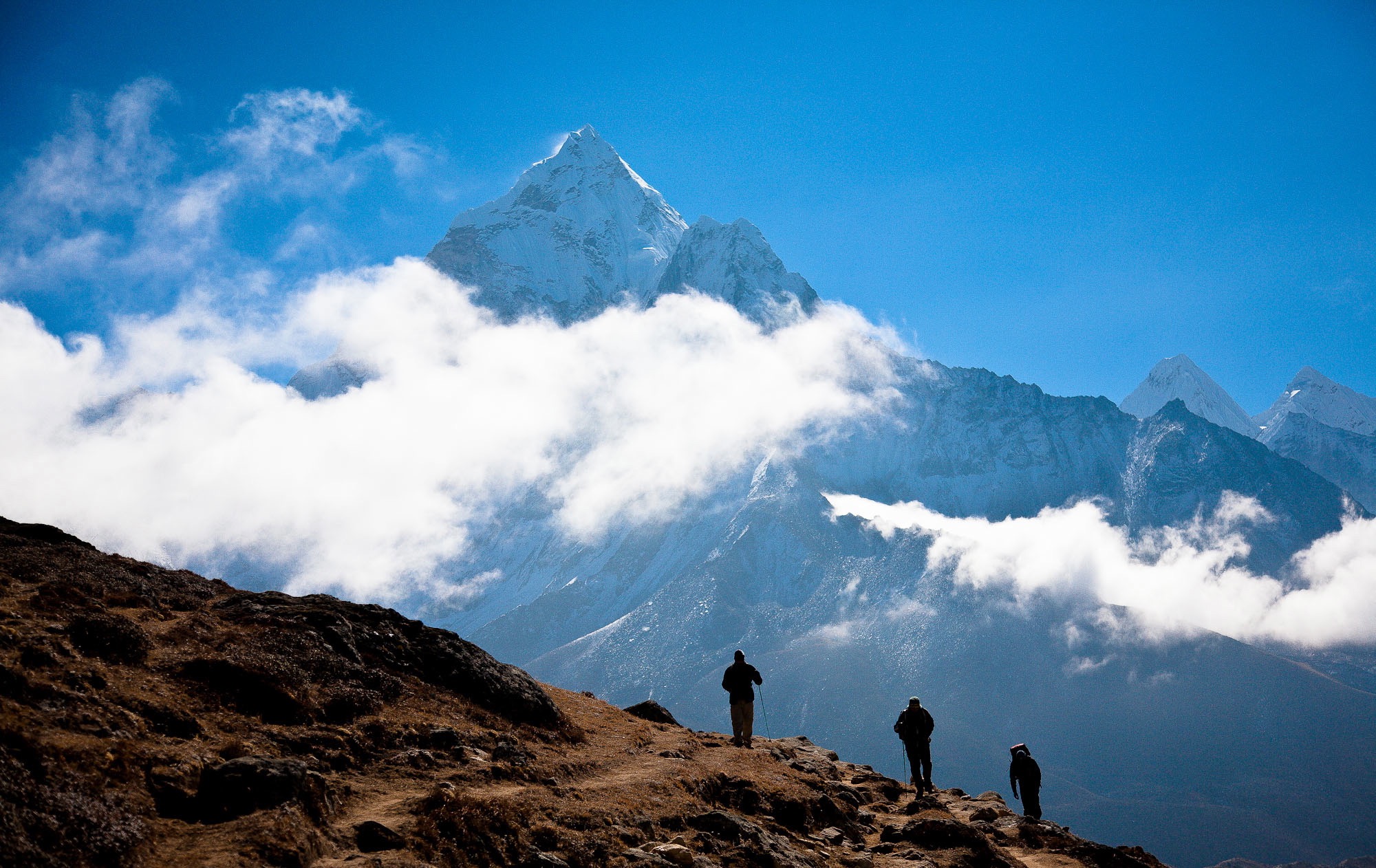A Journey to the Foot of the World’s Highest Mountain
There are few places on Earth that capture the imagination like Mount Everest Base Camp. For generations, trekkers and climbers have set their sights on this legendary destination – not just to stand beneath the highest mountain on the planet, but to experience the incredible landscapes, culture and spirit of the Nepalese Himalaya.

To reach Mount Everest Base Camp is to step into a world unlike any other. Ancient monasteries cling to mountain ridges. Prayer flags dance in the wind. The sound of yak bells echo through pine forests and across suspension bridges. It’s a journey that awakens something primal – a sense of wonder, humility and connection that only the world’s greatest mountains can inspire.
The Allure of the Khumbu
The Everest Base Camp trek begins in the small mountain town of Lukla – the gateway to the Khumbu region. From here, the trail winds gradually upwards through villages like Phakding, Namche Bazaar, Tengboche and Dingboche before finally reaching the base of Everest itself.

Along the way, trekkers walk in the footsteps of legends. These are the same trails once used by Sir Edmund Hillary, Tenzing Norgay and countless Sherpa climbers who carried loads to support historic expeditions. Every turn on the trail reveals a new panorama: the elegant pyramid of Ama Dablam, the icy flanks of Lhotse, and the distant silhouette of Everest towering above them all.
But what truly sets this journey apart is the human connection. The Khumbu is home to the Sherpa people, an ethnic group renowned for their strength, resilience and warmth. Their culture is deeply rooted in Tibetan Buddhism, and their villages are filled with mani walls, stupas and colourful monasteries. When you trek through this region, you’re not just passing through mountains – you’re walking through a living, breathing culture that has thrived here for centuries.

The Sherpas’ reputation as the world’s finest high-altitude climbers is well deserved, but they’re equally known for their kindness and humility. Their belief in community, respect and balance with nature gives every traveller a valuable lesson in what it truly means to live in harmony with the environment.
What It’s Really Like to Reach Base Camp?
The trek to Mount Everest Base Camp is not a climb – it’s a journey of endurance and discovery. At an altitude of around 5,364 metres, Base Camp sits on the Khumbu Glacier, surrounded by icefalls and jagged peaks that make up the world’s most dramatic skyline.
When trekkers arrive, emotions often run high. There’s no summit, no medal – just the quiet satisfaction of having walked all the way to the foot of the highest mountain on Earth. The colourful tents of climbers preparing for their summit bids sit beneath the immense wall of the Khumbu Icefall, a reminder of the courage it takes to go higher.

For most trekkers, this moment is about something deeper than altitude – it’s about personal achievement, resilience, and the humbling beauty of nature on a grand scale.
How Long IS the Trek and How Far It Is?
The Everest Base Camp trek typically takes 12 to 13 actual walking days to complete. This includes time to acclimatise to the altitude, which is essential for a safe and enjoyable journey. The total distance is roughly 130 kilometres round trip – about 65 kilometres each way – but the terrain, altitude and daily elevation gains mean the pace is relaxed and steady.
Trekkers usually spend two nights acclimatising in Namche Bazaar, the vibrant trading hub of the Khumbu, and another rest day in Dingboche, a beautiful valley surrounded by towering peaks. These stops allow the body to adjust gradually, significantly reducing the risk of altitude sickness.

Each day on the trail brings something new – lush forests, windswept ridges, glaciers and awe-inspiring mountain vistas. The journey is challenging at times, but with good preparation, a positive mindset and experienced guides, it’s achievable for anyone with moderate fitness and determination.
When Is the Best Time to Visit Mount Everest Base Camp?
While the Khumbu can be visited year-round, the best times to trek to Mount Everest Base Camp are during spring (March to May) and autumn (late September to November).
In spring, the valleys are alive with rhododendron blooms and the weather is relatively warm. This is also the time when Everest expeditions take place, so Base Camp is buzzing with activity – climbers, tents, and the energy of teams preparing to summit.
In autumn, the skies are clear and the views are spectacular. The monsoon has passed, leaving behind clean air and a sense of calm. Temperatures are cooler at higher altitudes, but visibility is unbeatable, making it perfect for photography and long days on the trail.
Winter (December to February) offers quieter trails and crystal-clear mornings, but it’s very cold above 4,000 metres. Summer (June to August) coincides with the monsoon, bringing rain and cloud cover, but it can still appeal to those seeking solitude and lush greenery in the lower valleys.
The Sherpa Way of Life
What makes the Everest region so special isn’t just the mountains – it’s the people who call them home. The Sherpa people have shaped the culture and identity of the Khumbu for generations.
Life here revolves around family, faith and the land. Beautiful monasteries like Tengboche and Pangboche are spiritual centres that guide daily life, where chanting monks, fluttering prayer flags and the scent of juniper incense create an atmosphere of peace and devotion.

Visitors who stay in local lodges quickly discover that Sherpa hospitality is second to none. Meals are hearty, smiles are genuine, and every guest is treated like family. The simple rhythm of life in the mountains – waking to the sound of the river, sipping tea by the stove, watching the sunrise over Ama Dablam – leaves an impression that lasts a lifetime.
The Gateway to Adventure with Trek Climb Ski Nepal
If the call of Mount Everest Base Camp has been whispering to you, Trek Climb Ski Nepal can help turn that dream into reality. With over two decades of experience leading safe, successful expeditions throughout Nepal, we’ve guided hundreds of expeditions to Everest Base Camp – and every single one has reached their goal.
Our Everest Base Camp treks are designed for travellers of all ages, experience levels and budgets. Whether you’re after a classic 14-day trek, a premium comfort itinerary with better accommodation and an optional helicopter return, or a shorter adventure that still captures all the highlights, we have an option that’s perfect for you.
Every trip includes comfortable lodge accommodation, all meals while trekking, highly experienced guides, and our famous all-you-can-eat food policy – because good nutrition is vital at altitude. We also supply quality down jackets, sleeping bags and a personal kit bag for every participant.

Most importantly, we operate with fairness, transparency and respect for the local communities who make these adventures possible. Our Sherpa partners, guides and porters are the heart of our business – and together, we create experiences that are safe, authentic and unforgettable.
When you trek with Trek Climb Ski Nepal, you’re not just ticking off Mount Everest Base Camp – you’re joining a legacy of friendship, integrity and shared success that’s been growing for over 20 years.
👉 Discover your perfect Everest adventure today: Trek Climb Ski Nepal – Everest Base Camp Treks


